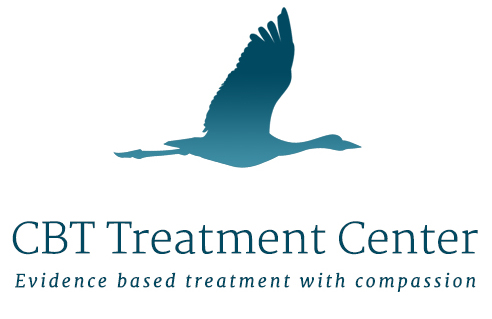 The weight of anxiety is inexplicably heavy. You avoid situations that trigger the apprehension and fear that you live with on a daily basis as best as you can, and shy away from conversations with friends and loved ones about it because they don’t understand that you can’t just “get over it”. Then there are the late nights, wide awake, with your thoughts consumed by worry and panic about not measuring up to your own expectations, or the expectations of others. It’s the constant feeling that something that is about to go wrong, even when there’s no reason to feel that way. You can’t just be excited about any good fortune, because you are certain that it’s not going to work out in the long run. The feeling is crushing within your chest, and there are even times where you feel like you might be dying.
The weight of anxiety is inexplicably heavy. You avoid situations that trigger the apprehension and fear that you live with on a daily basis as best as you can, and shy away from conversations with friends and loved ones about it because they don’t understand that you can’t just “get over it”. Then there are the late nights, wide awake, with your thoughts consumed by worry and panic about not measuring up to your own expectations, or the expectations of others. It’s the constant feeling that something that is about to go wrong, even when there’s no reason to feel that way. You can’t just be excited about any good fortune, because you are certain that it’s not going to work out in the long run. The feeling is crushing within your chest, and there are even times where you feel like you might be dying.
You view the world around you through a lens of apprehension and worry, and can’t enjoy life the way that others seem to. You fight this battle every day.
Understanding Anxiety
Anxiety is not something that you just “get over”, which you know all too well if you suffer from it. It is characterized by excessive worry, fear, panic, and apprehension, and can even manifest itself physically as trembling, headaches, stomachaches, tics, nausea, insomnia or other symptoms. Common anxiety disorders include (but are not limited to): Generalized Anxiety Disorder, Social Anxiety Disorder, Specific Phobia, and Panic Disorder.
Anxiety can be genetic, environmental, related to a traumatic event, none of these factors, or all of these factors. The cause of anxiety is not specific to a singular set of circumstances, but rather a composite of various elements.
The Most Common Mental Health Issue in America
According to National Institute for Mental Health, 18.1% of the adult population in the United States suffers from an anxiety disorder, making it the most common mental health issue in America. Furthermore, over 1 in 5 of these cases are categorized as “severe”, and the average onset of an anxiety disorder is 11 years old. That means that if you are an adult seeking treatment, it is very likely that you have been dealing with this for at least half of your life! Sadly, just over 1 in 3 people are receiving minimally adequate anxiety treatment.
How is CBT Used as an Anxiety Treatment?
Cognitive Behavioral Therapy (CBT) is the gold standard of anxiety treatment, and has provided relief for many people who have suffered with it. It is an evidence-based, solution focused approach that gives you the skills that you need to manage your anxiety as you encounter challenges in your daily life. What good is therapy if it only helps you when you’re sitting my couch? You have to be able to take the skills that you learn in therapy and apply them to your life. CBT requires you to work to face your fears, but it can be extremely rewarding. As a thoroughly researched and effective anxiety treatment, CBT’s evidence-based approach has helped many people break the cycle of anxiety.
 Everyone worries, right? What is normal, and what isn’t?
Everyone worries, right? What is normal, and what isn’t?
What constitutes “excessive” fear, worry, panic, or apprehension? Everyone worries about work, school, friends, and family, so how are you to know when it has become a problem, rather than something that everyone goes through?
Anxiety disorders are different because they interfere with your ability to lead a normal life. It isn’t something that just comes and goes, based on whether or not you have an upcoming deadline at work, or if you got into a fight with your significant other. If you have an anxiety disorder, the times when you’re not worried, fearful, or apprehensive are the exception, rather than the rule.
If you’re struggling to lead a normal life because of constant worry, it’s time to seek help.
I’ve lived with this for so long that I don’t know what I’d do without my anxiety.
This is very, very common. Remember, the average age of onset with anxiety disorders is 11 years old. Your anxiety is probably one of your oldest enemies and one of your oldest friends, all at once. For better or for worse, it feels like it’s a part of who you are, and the thought of losing that is pretty scary, because of the uncertainty. Who would you be without it?
I can say with confidence, based on my years at the Harbor UCLA-Medical Center, the UC-Davis Medical Center, and in my own practice, that a happier, healthier version of you is waiting for you to address your anxiety, so you can meet them. I understand that it is scary, and I can help you navigate those uncertain waters. This is the ultimate goal of anxiety treatment…to help you get comfortable in your own skin.
I’m worried about the cost.
CBT is a cost-effective, solution based anxiety treatment that is intended to be relatively short term. The goal is not for you to be in therapy for the rest of your life. The goal is for you to acquire skills to deal with your anxiety, then to face it, and then go and live your life. While I cannot speak to the specifics of your particular circumstances, the majority of my patients will see me once a week for several weeks, then once every other week as their situation improves, and then simply as needed throughout the following months and years.
Some situations require more time and some require less, but by and large, CBT is a short term (and probably long overdue) investment in your health, and will be of great benefit to you in almost all facets of your life. It’s well worth it.
What Now?
If you are reading this, you have already taken the first step down a new path in your life. Keep going. Anxiety treatment is available, and you don’t have to let the fear, worry, or apprehension control you anymore. Please call me at (424) 262-2014, so we can talk. I offer a free, 15 minute phone consultation, where we can discuss your problem and begin the process of finding a solution. If you are not quite ready for that, please sign up for our free Anxiety Newsletter, so you can learn more about this common problem. That feeling in your chest doesn’t have to be there forever.
